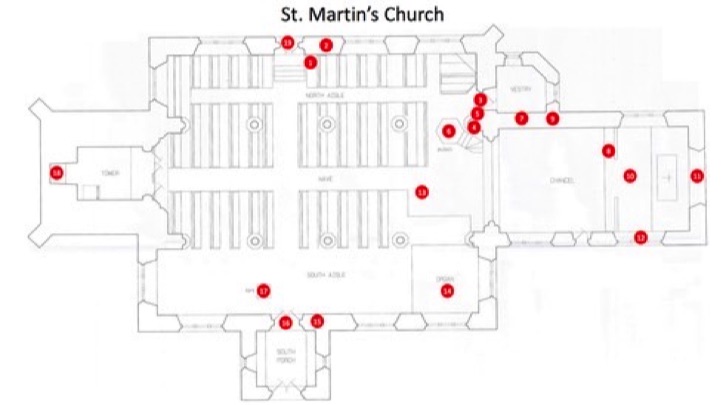When you enter the church by the North door immediately on your left you will find an (1) Alms Box in the form of an open hand. Men of the village carved this for Charles Liddell in 1899 as a dedication to his parents. Next to this is a (2) list of all the vicars who have served this parish since 1258.
The Pulpit (6) was carved by five men of the village in 1899, directed by Revd. E. Liddell, and the small brass plaque bears their names.
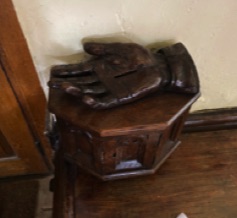
Along the wall of the North Aisle there are two memorials, (A) one dated 1699 and the other (B) (to the right of the door) dated 1715. .
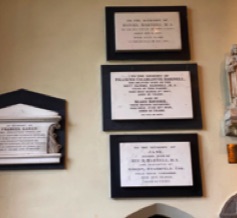
Above the Vestry door (3) are memorials to the Darnell family — the Reverend Daniel Darnell was the longest serving vicar and during 1866-71, he and his friend Colonel Richard Clarke restored the interior of the Church.
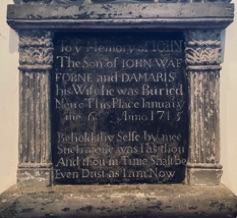
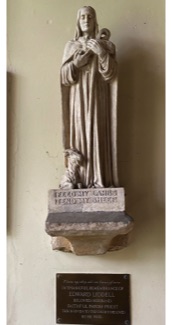
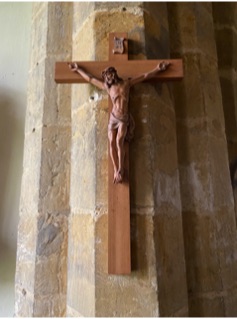
The Crucifix above the pulpit (4) was given in 1964 by a churchwarden’s wife, Mrs. C. Abbott of The Stone House.
Nearby the statute of the Good Shepherd (5) with lamb was given to the church by Mrs. Liddell in memory of her husband.
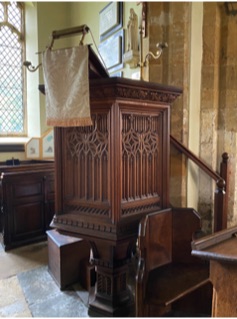
Approaching the Altar Rail notice the unique metal leaves (8) supporting the oak rail. The metal work was redesigned and finished many years ago by a Dutchman living in Daventry by the name of Coyles.
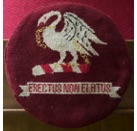
Turning left into the Chancel there are numerous memorial tablets, mainly dedicated to members of the Clarke family. Some of the tablets bear the family crest (7) of a chained swan which has been reproduced on a kneeler in the choir stalls together with the motto ‘Erectus non Elatus.’ The Clarke family were Lay Rectors for many years and were responsible for the maintenance of the chancel until 1959.
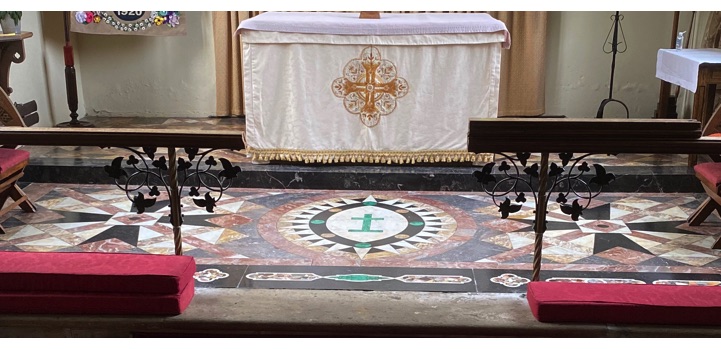
On the North Wall of the chancel is a memorial to Lady Emma Louisa Tulloch, (9) who was a gifted needlewoman and lacemaker. She was also a personal friend of the then Czar Alex II of Russia for whom she made a quantity of lace for his personal use: as a thank-you gift the Czar sent Lady Tulloch some semi-precious malachite stone (10) which forms the Cross in the centre of the inlaid marble sanctuary floor. (1868)
The east window is dated 1854, (11) having four panels each de-picting an episode in the life of the Lord; the memorial window on the south wall (12) is dated 1855.
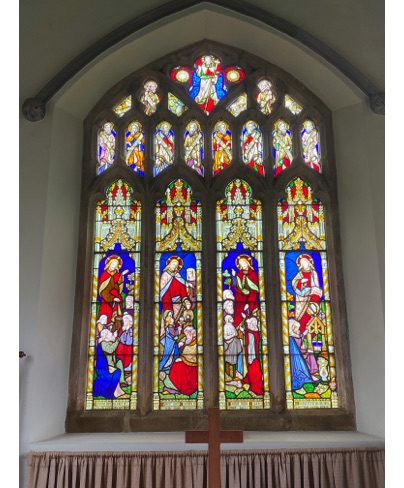
The carved wooden Lectern (13) was made and presented to the Reverend D. Darnell by the pupils of the school and is dated 1869.
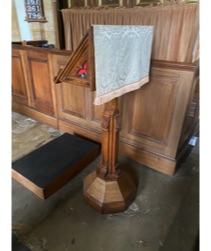
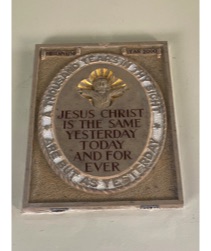
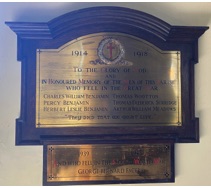
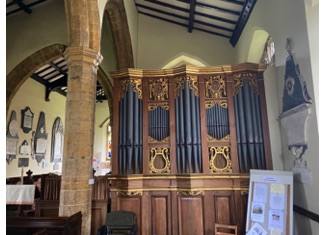
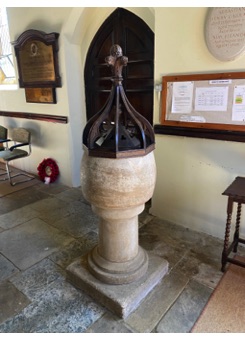
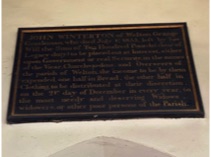
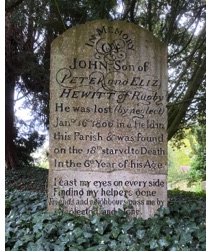
The organ (14) was presented to the church by Sir Halford Reddish to commemorate the Coronation of Elizabeth II (1953). The two manual instrument was manufactured in 1909 by the Aeolian Organ Company of New York and was originally installed at Hengrave Hall, Suffolk.
To the left of the South door (15) Memorials bear the names of those who fell in the two World Wars.
The plaque above the South door (16) was hand engraved and donated by Mr Harold Crossley of Welton to celebrate the Millennium.
To The tub shaped Font (17) is reputed to be of Saxon origin and is said to have been dragged all the way from East Anglia in one piece.
The tower houses a ring of five bells, the oldest dated 1629 and weighing 14.5cwt; the bells were repaired and re-consecrated on Easter Day 1991 having been out of action for many years.
The tower also holds a small and beautiful stained glass window, (18) to St Martin, the patron Saint of the Church. The striking clock was modernised in 1964 by money given by the Ladies Guild and is housed in the bell chamber.
The pews were originally golden in colour matching the oak in the Chancel, but after the disastrous roof fire of January 1977, all had to be darkened to cover the burn marks caused by falling debris. The pews in the South aisles were removed in 2004.
The kneelers in the pews were designed and worked by members of the congregation and The Ladies Guild during the years 1965 to 1968, and were dedicated in 1970 by Bishop Eastaugh of Peterborough.
Above the north door (19) look for the wooden plaque giving details of the Winterton Charity: this is one of the small charities dis-tributed in the village at Christmas time.
Most of the gravestones were laid around the edge of the Churchyard in 1968, but one of those still remaining (20) is to the memory of a six year old boy who was ‘lost in the fields’ adjoining the village in 1806 and starved to death. The stone has been restored and can be seen from the road below the double gates.
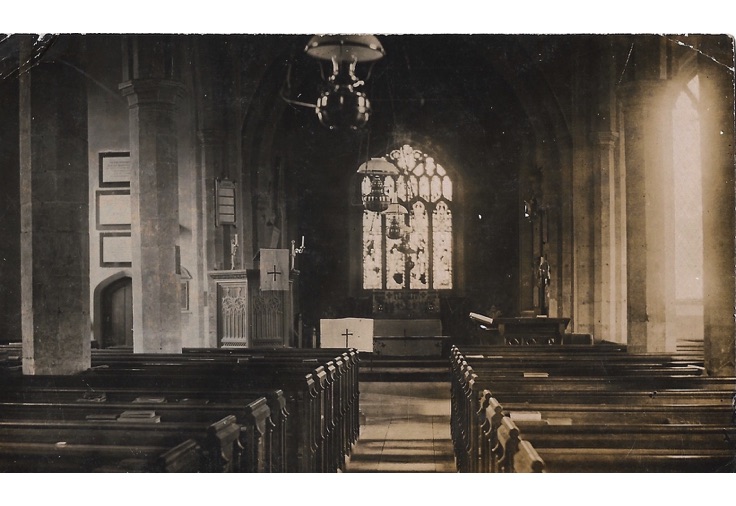
St Martin's c1909
Click on the plan above to open to larger copy

